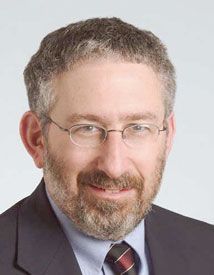Concerns Shadow Bright Prospects for Use of EMRs
Healthcare professionals in many specialties, particularly oncology, have long wrestled with the complexities and costs of integrating electronic medical records

There are fears physicians will be held liable for what is not entered into an electronic medical record (EMR)—or perhaps be considered responsible for collecting patient data from other providers for inclusion in an EMR.
Healthcare professionals in many specialties, particularly oncology, have long wrestled with the complexities and costs of integrating electronic medical records (EMRs) into their practices. Now, EMRs are increasingly becoming part of the landscape in healthcare, opening up a wider vista on the promises and the pitfalls of this rapidly evolving technology.
Two recent surveys provide a window into the quickening pace of EMR adoption. The National Center for Health Statistics, part of the Centers for Disease Control and Prevention (CDC), discovered in a survey last year that, for the first time, >50% of office-based physicians in the United States were employing some form of EMR.1 These data are particularly striking when one considers the fact that only 29% of physicians reported use of any type of EMR system when the CDC conducted a similar survey in 2006. Of further interest, the data revealed a wide variation in the adoption of EMRs among states, ranging from the highest level of utilization in Minnesota at 80% to the lowest level in Kentucky at 38%, sharp differences that may be related to specific third-party payer incentives in certain regions.
An EMR industry survey on the self-perceived job satisfaction of physicians in “small practices” in the United States offers a provocative view of the potential impact of EMRs on doctors’ lives.2 Importantly, while survey respondents identified a number of concerns, including less compensation, 59% stated “that new technology had made things easier for their medical practice.” (Notably, American Medical Association data reveal that 80% of physicians in the United States are in practice settings of <10 physicians.)
These reports are clearly encouraging with regard to both the expanded use of the EMR in the practice setting and its potentially favorable impact on the lives of physicians caring for patients within an increasingly complex and burdensome bureaucratic environment.

OncLive Physician Editor Maurie Markman, MD
However, there are nagging concerns associated with EMRs. A recent commentary in the lay press, summarizing data from several sources, noted that “parts of a patient’s electronic medical records have disappeared or been saved in the wrong patient’s file.”3 The commentary further reported that “the FDA said it received 260 reports of malfunctions related to health information technology ‘with the potential for harm,’ including 44 reported injuries and 6 reported deaths in 2008 and 2009.”
In oncology, patient safety is a significant concern when designing EMR systems, according to an abstract in the American Society of Clinical Oncology’s 2010 Educational Book.4 “Chemotherapy ordering, preparation, and administration are high-risk activities because of the toxic nature of chemotherapy agents and their small therapeutic windows,” wrote Lawrence N. Shulman, MD, chief medical officer at the Dana-Farber Cancer Institute in Boston, Massachusetts. “Small errors can result in significant patient morbidity and mortality.”
Concern also has been voiced regarding the liability that doctors may face as a result of information either contained within, or potentially not entered into, an EMR.5 Specific areas of concern include: (a) additional information within the EMR that would increase physician responsibility to act on the information; (b) use of electronically employed treatment guidelines that may establish relatively rigid legally defi ned “standards of care;” (c) the availability of data in an EMR that may force physicians to obtain information related to an individual patient from another (and perhaps many) healthcare providers; and (d) the future legal, rather than regulatory, requirement that electronic technology be employed by all physicians, independent of unique issues in practice settings (eg, rural location) and available financial resources either to initiate or subsequently update hardware or software.
It is virtually certain that EMRs will become increasingly central both to the delivery and documentation of medical care, and to communications with patients and other healthcare professionals about that care. As we move forward, this exciting arena is filled with enormous potential to benefit patients and to improve the job satisfaction for those who work to optimize their patients’ health. It is essential, however, that legitimate concerns, such as those discussed above, are both considered and appropriately addressed.
References
- Cook B. Physician EMR use passes 50% as incentives outweigh resistance. Am Med News. 2011;54(1):1-2.
- Physician survey reveals “unhealthy” state of small medical practices nationwide [news release]. San Francisco, CA: Practice Fusion; January 11, 2011. www.practicefusion.com/pages/pr/ physician-survey-shows-state-of-smallmedical- practices-in-us.html. Accessed January 17, 2011.
- Freudenheim M. Panel set to study safety of electronic patient data. New York Times. December 13, 2010.
- Shulman LN. Improving safety and efficiency in an oncology practice: making the most of an oncology electronic health record system [manuscript summary taken from Practice Management and Information Technology]. American Society of Clinical Oncology 2010 Educational Book.
- Mangalmurti SS, Murtagh L, Mello MM. Medical malpractice liability in the age of electronic health records. N Engl J Med. 2010;363:2060-2067.




